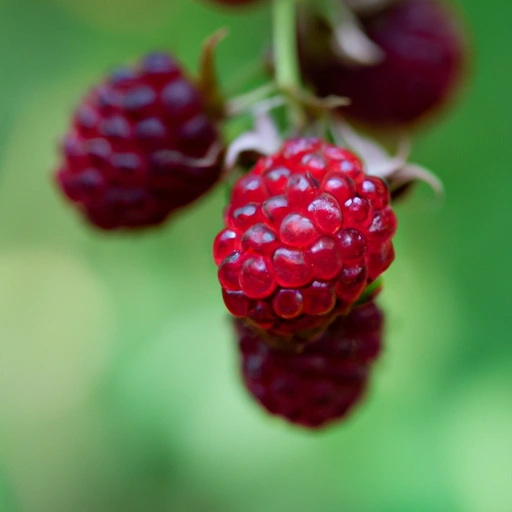Loganberry
Description

The loganberry is a hybrid berry derived from crossing a blackberry with a raspberry. It combines the deep, tart flavor of blackberries with the sweet, fragrant essence of raspberries, resulting in a unique and versatile fruit. The berry itself is elongated, similar to the blackberry, and has a deep red or purple color when ripe. Loganberries are rich in vitamins, minerals, and antioxidants, making them a nutritious addition to any diet. They can be found fresh, frozen, or canned, and are used in a variety of recipes around the world.
Common uses
Loganberries are commonly used in the making of jams, jellies, syrups, and pies. They are also a popular flavor for yogurts, ice creams, and smoothies. Beyond sweet applications, loganberries can also be found in savory dishes, where their tartness complements rich and hearty flavors.
Nutritional value
Calories
Loganberries are low in calories, with approximately 81 calories per cup (123 grams or about 4.3 ounces).
Protein
They contain about 2 grams of protein per cup.
Fat
Loganberries are virtually fat-free, with less than 1 gram of fat per cup.
Carbohydrates
Carbohydrates in loganberries amount to about 19 grams per cup, with a significant portion of that being dietary fiber.
Vitamins
The berries are rich in vitamin C, with one cup providing about 50% of the recommended daily intake (RDI). They also contain vitamin K, vitamin E, and several B vitamins in smaller amounts.
Minerals
When it comes to minerals, loganberries offer a good source of manganese, iron, potassium, and calcium.
Health benefits
Consuming loganberries can contribute to a stronger immune system due to their high vitamin C content. The fiber helps promote digestive health, while the vitamins and minerals support overall well-being. Antioxidants found in loganberries, such as anthocyanins and ellagic acid, may help prevent chronic diseases and fight inflammation.
Potential risks
While loganberries are generally safe for consumption, individuals with allergies to berries should approach them with caution. Overconsumption may lead to gastrointestinal discomfort due to the high fiber content.
Common recipes
Loganberries are used in recipes for preserves, desserts like cobblers and cheesecakes, and beverages such as cocktails and fruit punches. They also serve as a flavorful topping for pancakes and waffles.
Cooking methods
This fruit is versatile and can be used fresh or cooked. Cooking methods include baking, boiling to make compotes or syrups, and blending into smoothies or purees.
Pairing with other ingredients
Loganberries pair well with other fruits, such as peaches and citrus, as well as with herbs like mint and basil. They also complement dairy products, like cream and cheese, and can be used as a counterpoint to rich meats in savory dishes.
Summary
The loganberry is a unique fruit that offers a blend of tartness and sweetness, making it a prized ingredient in both sweet and savory dishes. With its rich nutritional profile and versatility, it is a delightful addition to any culinary creation, appealing to food enthusiasts across the globe.